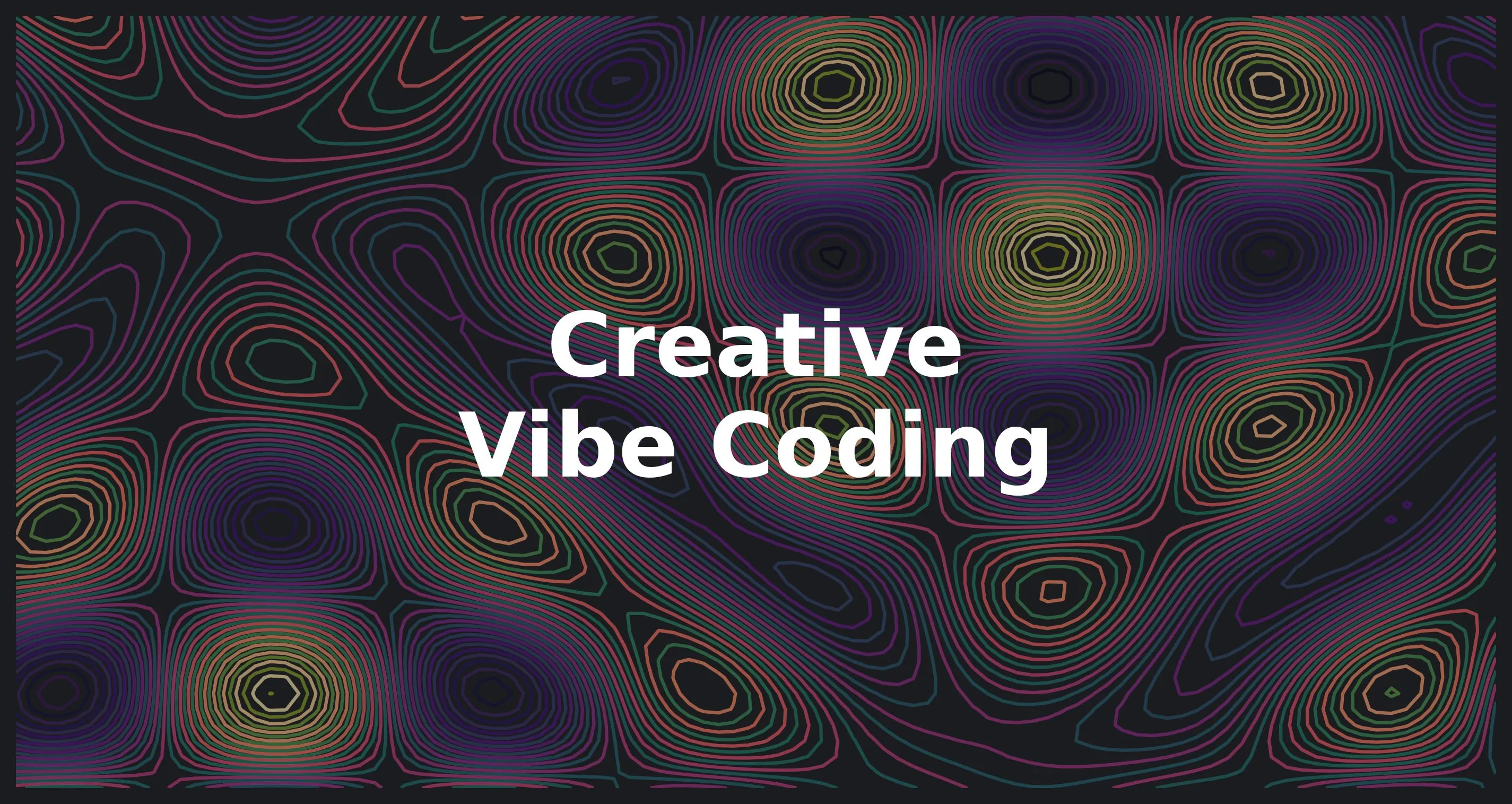From Creative Coding to Vibe Coding: The AI Revolution in Digital Art
Explore how AI and 'vibe coding' are transforming creative coding from a technical discipline into an accessible form of digital art creation.

Key Takeaways
- AI has transformed creative coding from a technical discipline into an intuitive creative medium
- Memex brings desktop-native AI building to creative coding, enabling natural conversation about art and design
- The technical barriers between imagination and implementation have dissolved, democratizing digital art creation
The world of creative coding is experiencing a paradigm shift. A practice that began decades ago as a way for artists to express creativity through code is now being transformed by AI and "vibe coding" into a completely new frontier. Through natural language and creative intent, anyone can now bring their digital art visions to life.
The Rich History of Creative Coding
Creative coding has deep roots in the intersection of art and technology. In 2001, Casey Reas and Ben Fry created Processing, a platform that first made programming truly accessible to artists and designers 1. Their innovation sparked a movement that would shape digital art for decades. OpenFrameworks emerged in 2005, bringing powerful C++ tools to artists. Three.js arrived in 2010, revolutionizing 3D graphics in browsers. By 2014, P5.js had brought creative coding to the web, completing the foundation of modern creative programming.
For over two decades, artists and developers used these tools to push the boundaries of digital art. They created interactive installations, generative designs, and immersive digital experiences. Yet a persistent challenge remained: creators needed to master both artistic vision and technical implementation. This dual requirement meant creative coding remained accessible only to those who could bridge both artistic and programming worlds.
The LLM Revolution (2022-2024)
The arrival of Large Language Models marked the beginning of a new chapter in creative coding. What started as simple code completion in 2022 quickly evolved into something more profound. Early experiments produced basic P5.js sketches and simple animations, though they still required significant human oversight to function properly.
By 2023, the technology had matured considerably. Artists began exploring more complex territory: particle systems that responded to natural language descriptions, interactive animations that emerged from creative conversations, and even shader programming that translated artistic intent into visual effects. While these advances were impressive, they still required technical guidance to bridge the gap between creative vision and working code.
The true breakthrough came in 2024 with the release of GPT-4 and Claude 3.5 Sonnet. Ethan Mollick captured the community's imagination by demonstrating how AI could create complex P5.js animations through simple creative direction. Claude's new artifacts feature pushed the boundaries further, enabling dynamic GPU architecture visualizations and interactive particle systems through natural conversation. As Deedy observed, this marked a historic moment: the first time an LLM could create "algorithmic art" in one shot.
The revolution spread quickly to local computing. Artists began creating organic flowing animations and complex mathematical visualizations on their own machines. Interactive art pieces emerged from simple creative descriptions. The frontier expanded into three dimensions, with creators developing full 3D game environments through natural language. Pieter Levels demonstrated the potential of this approach with his viral fly.pieter.com project 2, showing how AI could transform creative intent into immersive 3D experiences.
Creative Vibe Coding with Memex
Memex takes this creative revolution from experiment to reality by unifying multiple creative domains on your desktop. Through natural conversation, Memex transforms creative intent into working code across a spectrum of creative applications. Watch as it generates Twigl shaders from simple descriptions, turning conversations about light and motion into real-time visual effects. Witness it scripting Blender to create 3D models and animations that match your creative vision. Experience how it can build particle systems and interactive animations from natural descriptions of movement and behavior.
Why This Matters
The impact of this transformation extends beyond just making coding easier. We're witnessing the democratization of creative coding, where artistic vision can flow directly into digital reality through natural conversation. The traditional barriers between imagination and implementation are dissolving, replaced by an intuitive dialogue between creator and machine. This fusion of creative domains means artists can move freely between different forms of digital expression, from real-time shader art to interactive 3D experiences, from generative animations to full-stack creative applications.
Starting Your Creative Journey
Beginning with Memex feels natural and intuitive. Install the application, share your creative vision through conversation, and watch as your ideas take digital form. The platform guides you through the creative process, handling technical implementation while you focus on artistic decisions. When your creation is ready, deploy it to your chosen platform, sharing your vision with the world.
The Future of Digital Creativity
"Vibe coding represents the next step in the evolution of software development where we describe intent rather than write code" 3. Yet this understates the transformation. We're witnessing the democratization of digital creativity itself, where the language of art and imagination becomes the language of creation.
The journey that began with Processing has evolved into something extraordinary. The technical barriers that once limited digital creativity have dissolved. The gap between imagination and creation has vanished. Through platforms like Memex, we're entering an era where creative vision flows naturally into digital reality.
Join our growing community of creators on Discord and start bringing your creative visions to life with Memex.